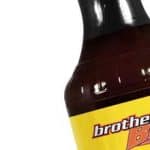You know the smell…you’re at your friend’s house watching the game when you catch a whiff of something in the air that brings back savory memories. You immediately ask, “What’s that amazing smell?” Before your friend begins to brag, you already know what he’s about to say. “I bought a new smoker and I’ve got some ribs in it right now. We’re using hickory tonight!”
The smoke that emits from burning logs is what differentiates BBQ from any other cultural cooking style. BBQ traditions vary by location. BBQ is typically smoked using hardwood logs, but wood chips can be used effectively as well. An experienced pitmaster knows what types of woods should be used to enhance the flavor of specific meats. What about the backyard BBQ hero? That’s where this article comes in handy. Below is a list of woods that you can learn from.
Different geographical areas in the United States have different traditions for BBQ. These traditions have come about due to the local flora, as well as the availability of wood.
Different geographical areas in the United States have different traditions for BBQ. These traditions have come about due to the local flora, as well as the availability of wood. Traditionally, most places tend to favor hickory, mesquite, oak and even grapevine cuttings to flavor meats.
What are the best types of wood for smoking meats?
Hickory
Popular among Southern and several Midwestern states. Hickory is a powerful smoking wood, but you must be careful because too much smoke can cause meats to taste bitter.
Red Oak
Red Oak is the king of hardwoods and oaks, especially when it comes to smoking meats. Oak is strong, but it does not tend to overpower the taste and texture of the meat. If you are cooking or smoking beef or lamb, this is the best hardwood to use.
Mesquite
Favored by restaurants, this naturally oily wood burns hot and fast. Mesquite is not the best choice for hosting long and lazy BBQ.
Grapevine Cuttings
Use Grapevine cuttings for BBQ beef, poultry, and fish. It will give your meats a nice, delicate flavor. The downside of grapevine cuttings is the vast amounts of pungent smoke.
Applewood
Applewood imparts a mild flavor and sweetness to meats. It would be best to only use this wood for BBQ pork, especially ham, and poultry.
Cherry Wood
Cherry wood is ideal for barbecuing pork and beef and gives a vibrant mahogany color to the meat. You can balance cherry wood by mixing it with hickory, oak, or pecan.
Pecan
The Pecan tree belongs in the hickory family. This wood is great for long barbecues, as it burns slowly, and gives meats a delicate flavor. Also a wonderful smoking wood, but pecan tends to be pungent and is best used in moderation.
Other Considerations
While we just named a few of our favorites types of smoking wood, there are plenty more that you might consider, too.
- Maple
- Alder ash
- Pear
- Plum
- Herb woods such as rosemary, thyme, and basil are popular as well
Which types of wood should be avoided when smoking meats?
- Spruce
- Redwood
- Sycamore
- Cedar
- Cypress
- Elm
- Pine
- Fir
- Eucalyptus
Other factors to consider
A good pitmaster knows not only about wood, but also how to burn it effectively and control flare-ups. Temperature plays a huge factor in the tenderness of your final BBQ. The right cut of meat, rubbed with a savory blend of spices, smoked with the optimum wood, and cooked at the perfect temperature = Savory, juicy, flavorful, so-tender-it-falls-off-the-bone-BBQ!








